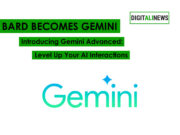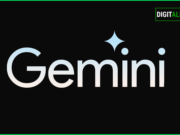In the ever-evolving landscape of digital advertising, staying ahead means leveraging the latest technologies to ensure your ads resonate with your target audience. Google’s introduction of AI-powered responsive search ads represents a significant leap forward in this regard. This innovative approach utilizes Google’s advanced AI capabilities to dynamically combine headlines and descriptions, ensuring your ads are as relevant and engaging as possible.
The recent updates to responsive search ads introduce an enhanced level of flexibility and performance optimization. Traditionally, these ads would feature a minimum of two headlines. However, insights have shown that a single, strategically chosen headline can sometimes yield superior results. Embracing this, Google has now enabled responsive search ads to adapt by displaying only one headline when it is predicted to enhance performance. This adjustment allows for headlines to be prominently positioned at the beginning of your ad’s description lines, offering a clearer message to potential customers.

To support marketers in this new dynamic environment, Google has rolled out comprehensive reporting tools. The combinations report, for instance, offers valuable insights into how your ads perform with different headline configurations. This ensures that assets pinned to specific positions retain their effectiveness, maintaining your strategic intent.
Understanding the importance of consistency across campaign messaging, Google has also introduced campaign-level headlines and descriptions. This feature simplifies the process of applying uniform messaging across your campaign, ideal for promoting overarching themes or sales. Additionally, these assets can be scheduled and pinned, offering precise control over their deployment.
A significant part of these updates is the integration of automated assets at the account level. Google’s AI now has the capability to create and select assets, such as dynamic image assets and sitelinks, that are predicted to improve ad performance. This allows for a more nuanced and effective approach to engaging with your audience, as automated assets can be used alongside or in place of manually created ones, depending on their potential impact.
For digital marketers, these updates offer a wealth of opportunities to enhance ad engagement and performance. By leveraging Google’s AI-driven insights and the increased flexibility in ad customization, you can ensure that your search ads are more relevant, engaging, and effective than ever before. This strategic approach to ad creation and management not only saves time but also aligns with the shifting behaviors and preferences of consumers, ensuring your message is always front and center.
As we navigate these changes, it’s clear that the integration of AI in digital advertising is not just a trend but a fundamental shift towards more intelligent, responsive, and effective marketing strategies. Embracing these capabilities will be key to staying competitive in the digital landscape, driving better outcomes for your campaigns, and ultimately, fostering deeper connections with your audience.











